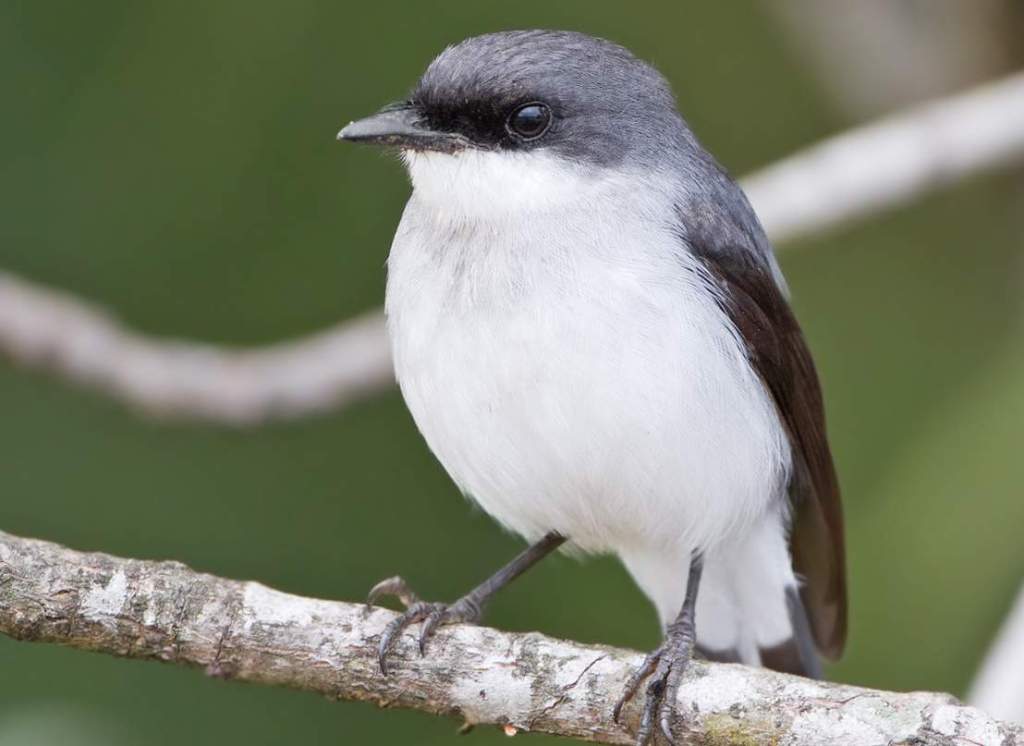The common Babbler is a dingy brown bird belonging to the member of the Leiothrichidae family of Argya genus. Its upper plumage is darker than the lower. In each feather, there is a dark line along the shaft which causes the bird to have a streaked appearance.
It goes about in pairs, or in small flocks. It feeds largely on the ground. When it runs, its tail (which is about 4½ inches long, i.e. half the total length of the bird) seems to trail on the ground like that of a rat, hence one of its names.
Its note is not unpleasant. It nests chiefly in the hot weather. The nursery is a neatly constructed cup, which is invariably placed in a low bush. Its eggs are pale blue. The common babbler is found in dry and vegetation land of southern Pakistan, India, Nepal, Bangladesh, and the Lakshadweep Islands.
The two or three turquoise blue eggs take 15 to 16 days to hatch and the young bird flies in a week with the adult group members. Normally, the young bird is yellow in color with iris color changing from hazel to dark brown. Here we will discuss some common babblers found in Asia.
The Jungle Babbler
The Jungle Babbler (Argya striata) are all untidy-looking, earthy-brown birds about the size of mynas. They go about in little flocks, thus it gets the name “Seven Sisters,” or “Sath Bhai (seven brothers).” They feed largely on the ground, seeking insects among dead leaves.
While feeding they keep up a constant chatter which every now and then grows very loud. They sound like a combination of a squeak and the groans of a revolving axle that requires to be oiled.
They continually jerk the tail, which appears to be very loosely inserted. Their flight is feeble and laborious. The Jungle Babbler bird is abundant in Asia and becomes rarer in south India. Where it is largely replaced in the plains by the two next species. The Large Grey Babbler (Argya malcomi) or Gangai, is more abundant even than C. canorus.
It may be recognized by its long tail. The three outer pairs of tail feathers are white very conspicuous during flight. The note is a loud harsh quey, quey, quey. The bird is commoner than thought. This is a non-migratory bird, normally found in forests and bushes.
The White-headed Babbler or Cretzschmar’s babbler (Turdoides leucocephala). This is another common babbler and can easily be recognized by the greyish white crown of its head. This bird is mostly found in subtropical or tropical dry shrubland. However, many researchers confused this bird with the yellow-billed babbler, which is otherwise called the white-headed babbler.
The Rufous-tailed Babbler (Moupinia poecilotis). This is another common babbler who is the least untidy-looking of other babblers. It may be recognized by the distinctly reddish hue of its tail. All three species of babblers build neat cup-shaped nests not far above the ground and lay beautiful blue eggs. It is closely related to typical warblers.
The Yellow-eyed Babbler (Chrysomma sinense). This is considerably smaller than the other babblers described. Its general color is cinnamon brown. The eyebrows, throat, and breast are white. The underparts are cream-colored, while the beak is black.
It emits a sweet note and builds a beautiful nest. And it measures about five to seven inches in depth. It is usually slung by its broadest part on two or more growing reeds, heads of millet, stout grass stems, or perhaps more frequently to a forked branch.
In the non-breeding season, it is often found in a group of five to fifteen birds. It is found in bushes and likes to eat insects but also takes berries and nectar. During the breeding season, it emits beautiful strong whistling twee-twee-ta-whit-chu.

Read More !! – Belted Kingfisher (kingfishers) – Ruddy Kingfisher ! A Perfect Photogenic Bird
Source: Wikipedia






